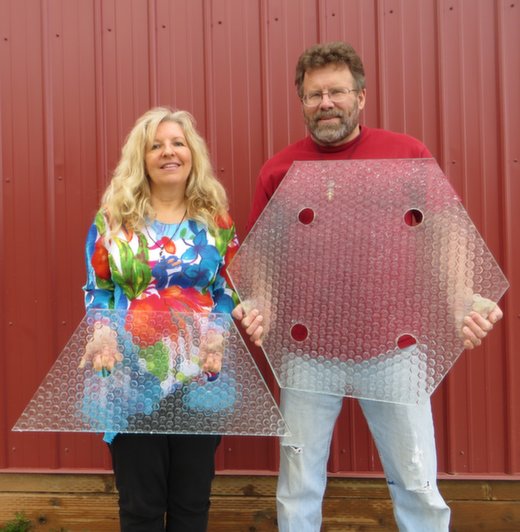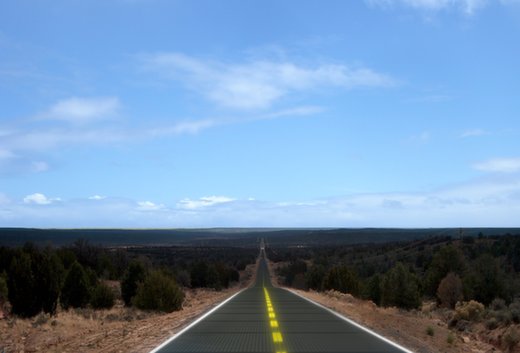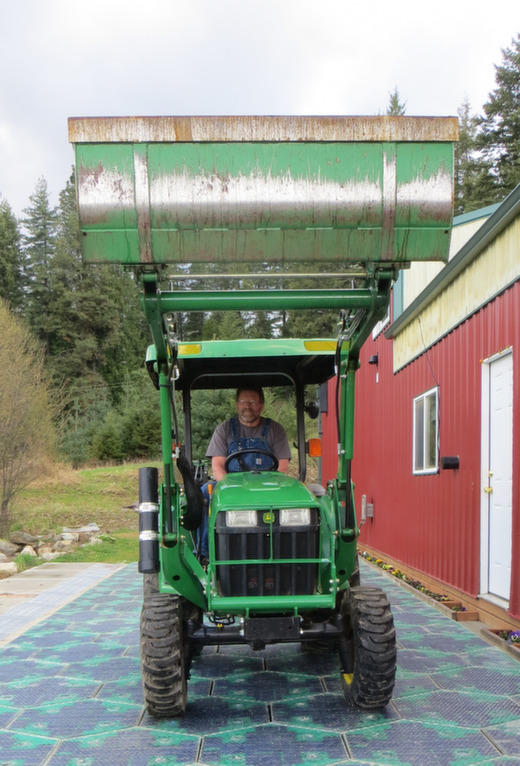America has over 31,000 square miles of roads and parking lots. A husband-and-wife team of inventors want to pave all this with tough solar panels, and they claim it would power the country.
Scott and Julie Brusaw think it’s dumb that the vast area of paved roads in the US should only carry vehicles.
So they’ve developed a road surface technology consisting of interlocking hexagonal devices that generate power.
Each segment is covered in a strong, textured, tempered glass capable of bearing loads of 113 tonnes and more.
Under the glass are circuit boards with “smart” capabilities, and solar panels. As well as generating electricity, the powered pavement could emit LED light for glowing road markings, and heat, to melt ice.
The system would be powered by cables tucked into in grooves alongside the road. A high-speed data network would report faults. The grooves could also house telephone lines and fibre optic cables, doing away with the need for vulnerable overhead structures.
Their idea is getting some attention in the US.

Scott and Julie Brusaw with high-strength glass panels (Solar Roadways)
Scott (Masters in electrical engineering, former R&D director at a small US manufacturer) and Julie (PhD in counselling psychology) have been working on it for 10 years. Their company is called Solar Roadways.
They got a boost in 2009 in the form of a $100,000 grant from the Federal Highway Administration to build a prototype solar road panel.
A year later they got another boost when they won $50,000 by getting the most votes in GE’s Ecomagination Challenge for “Powering the Grid”.
Then the Federal Highway Administration granted them $750,000 to build and test a solar-paved parking lot at their home-cum-laboratory in Idaho.

Artist’s rendition of a solar-paved, glowing highway (Dan Walden)
The parking lot is almost finished. It has all the system elements: solar cells, LEDs, heating elements, and the textured glass surface. At the end of March this year they were adding the finishing touches, putting mastic between the hexagons and writing software for the LED patterns.
Now, to begin the long, uncertain haul of gearing up for commercial-scale production, they’ve turned to the online funding platform Indiegogo. They’re looking for $1m so they can hire researchers in material science, civil and structural engineering to develop the system.
The Brusaws believe their idea has legs – or wheels.
Using data published by the American Geophysical Union, they calculate that America has just over 31,250 square miles of roads, parking lots, driveways, playgrounds, bike paths, and sidewalks.

The panels will bear more than 113 tonnes (Solar Roadways)
Paving all that with solar paving stones would generate, they claim, 13,385 billion kilowatt-hours of electricity, more than three times what the whole country consumed in 2009 – which was 3,741 billion kilowatt-hours, according to the US Energy Information Administration.
Their calculation takes into account the most efficient solar technology currently available, and the wide variation of sunshine across the US.
More on Solar Roads, including their number crunching, can be found here.






